|
A
History of the British Railway
Introduction |
|
|
|
The British Railway network
does not get the best possible press and never has done. Its
history is rarely examined except when people want to say how
much better things used to be. Yet the network does have a very
interesting history and it is true to say that any story you
hear about the railway, unless it involves ghosts or aliens,
probably has some basis in fact. Quite often the story has to
be changed to make it more believable. After all, who would believe
that a railway station could be demolished in one Saturday morning?
Or that one locomotive worked its last train with its boiler
filled with porridge so it could work up enough steam pressure
to move? Or that the answer to the question "Who was President
of the United States when the first public railway ran?"
is "No-one"?
This history is not complete;
that would be impossible. It does not feature every funny story;
that would also be impossible. It does not go into intricate
depth at every possible opportunity; that would be boring. It
probably also misses out your favourite event and is quite likely
not as funny as you think it should be.
It also cannot be contained
on one page and so has been divided into five: |
 |
Part
1
1758 to 1922
The Beginning
- Early railways - Early disagreements - Subsequent disagreements
- New railways - New speed records - New disagreements - A war
Picture: Prior
to the Grouping, companies tended to build big railways because
they could. This is Harringworth Viaduct on the Midland Railway's
line between Kettering and Oakham via Corby. Note the train. |
|

|
Part
2
1923 to 1947
Complexities
of Grouping - Complexities of not being Grouped - Modernisation
- New records - New races for the top - Mallard - Another war - Post-war
Picture: The
top of the range Great Western express locomotive - a "King"
class at Plymouth (North Road) with a railtour. |
|
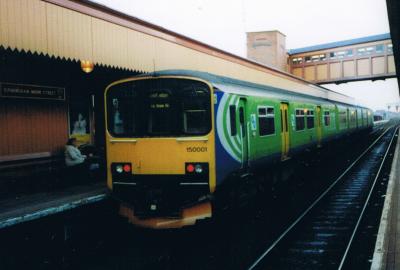
|
Part
3
1948 to 1994
How to Nationalise
- Modernisation - Further Modernisation - The Modernisation Plan
- Beeching - More Beeching - Post-Beeching - Into the '70s -
Out of the '70s - Enter the '80s - More new trains - Finishing
the '80s - Sectorisation
Picture: The
provincial people-mover - a Sprinter. The doyenne of this highly
successful design is seen in 2007. |
|
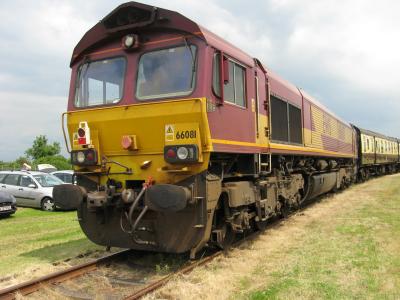
|
Part
4
1994 to Now
Intricacies
of privatisation - Finishing privatisation - Growth; problems
with - Hatfield and Great Heck - Rebuilding privatisation - Reorganising
privatisation - Improvements and successes - More reorganising
- Enter the Germans - What has actually changed?
Picture: One
major development since privatisation has been the almost total
standardisation of goods locomotives on the Class 66. This is
the 81st example. |
|
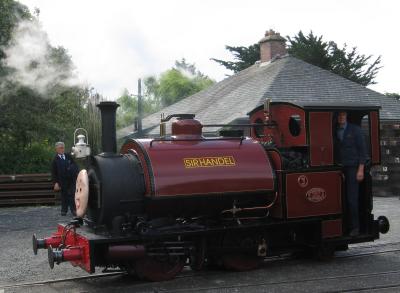
|
Part
5
1948 to Now
Early preservation
- The Talyllyn - Titfield and Ffestiniog - The Middleton - Beeching
- Flying Scotsman
- Early diesel preservation - Woodham's - More growth - Tornado
- Today
Picture: Sir
Haydn was the second steam locomotive to haul a train in preservation.
She is now branded to resemble Skarloey Railway locomotive Sir
Handel; the Thomas books have done a lot for preserved railways. |
|
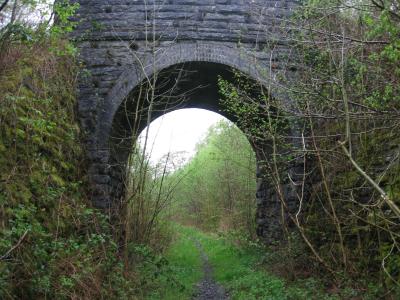
|
>>>Closure
Pieces>>>
A look at those
little mementoes to the stations and lines which were supposed
to be closed in the 1960s. The survival rate amongst those proposed
for closure is quite good.
Picture: Derelict
rail infrastructure now litters the country, awaiting alternative
uses or a Government willing to reverse the cuts. This bridge
is on the former Newcastle Emlyn line in West Wales. |
|
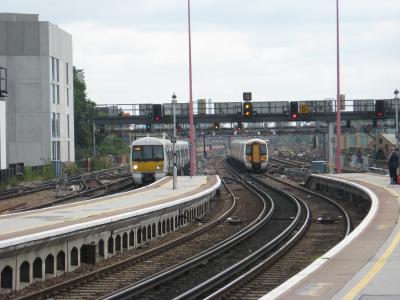
|
<<<Railways
Department<<<
<<<Home
Page<<<
Picture: The
railway in its most expansive form - the station throat south
of London Bridge as examples of Classes 376 (left) and 375 (right)
pass in August 2009. |
|






